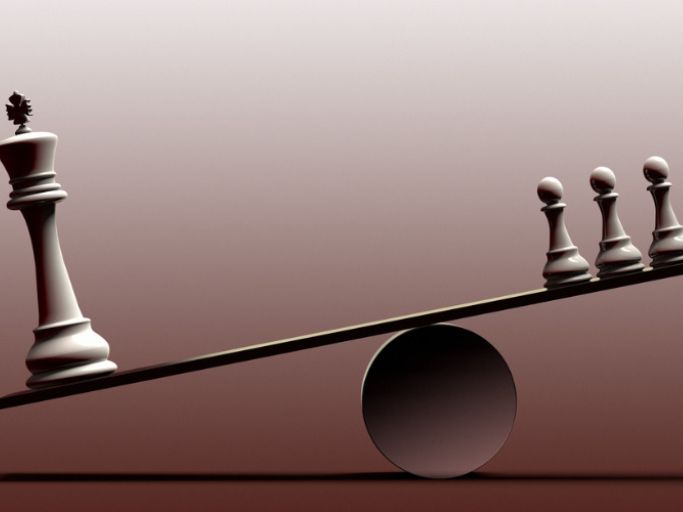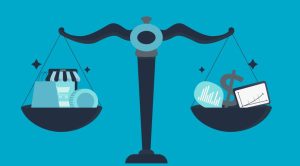Unarguably, Bangladesh is faring well in terms of economic and social landmarks, beating and surpassing many previous records. Bangladesh is now in a transitional period from a least developed country (LDC) to a developing country. Besides, the economy of Bangladesh is projected to be a developed one within 2041, hinging on translating the ‘Vision-41’ into reality. Putting it into numbers, Bangladesh’s GDP per capita is projected at USD 12,500 by 2041; and, Bangladesh will become the 25th largest economy in the world by 2035, up from 41st last year, trebling the size of the economy to $855 billion in 2035 from $301 billion in 2020 in US dollar constant prices, a report by the UK-based Centre for Economics and Business Research (CEBR) says. These statistics are assuring and indicate a bright future for the country.
Beyond all the signs of progress, there is something concerning, which remains little discussed and given little importance. That is income inequality.
According to the latest Household Income and Expenditure Survey (HIES) of Bangladesh Bureau of Statistics (BBS), the country’s Gini coefficient, which is the economic measure of equality, stood at 0.482 in 2016, up from 0.458 in 2010, which is very alarming. The Gini coefficient is measured on a scale of 0 to 1; an index of 0 represents perfect equality whereas 1 represents perfect inequality. To put it into context, the income share held by the bottom 10 percent of the population accounted for 3.70 per cent of the total national income in 2016, whereas it was 26.8 per cent of the income share held by the top 10 percent. This statistic represents the severity of income inequality.
There are several options for reducing income inequality in society, such as raising the minimum wage, implementing a more progressive tax code, lowering taxes on necessities, raising taxes on wealth, expanding the social safety net for the poor and the underprivileged, ensuring quality education and healthcare services to all through proper planning and adequate budgetary allocation, and so on.
Now, let’s shed some light on the role of education in reducing inequality. As per the estimation of UNESDOC (The United Nations Educational, Scientific and Cultural Organization), each year of schooling raises earnings by 10% and it has a practical implication in many countries, including Tanzania, where a secondary education reduces the possibility of being poor as a working adult by almost 60%. According to UNESDOC statistics, if all children are educated with the necessary reading, writing, and basic technical skillset, the world’s poverty could be reduced by 15%. Recently, education has had a practical implication in curbing poverty in China. China, a village dominated country, has nearly 1, 28,000 villages, and the villages are home to 770 million people. Rural poverty in China was 97.5% back in 1978. With a big surprise, China recently declared that it had overcome extreme poverty in February 2021. How did China accomplish this mountain task? What was the impetus that led to this fruition? – That is nothing but proper education. China effectively followed one of their maxims – “Don’t give a man a fish, rather teach him how to fish”. The government of China emphasized education, technical skills and know-how from the grassroots level that helped the country become one of the largest economies in the world from a poverty-stricken one. Putting things into perspective, education functions as an equalizer in terms of economic, societal, and political matrices.
Bangladesh has done remarkably well regarding primary school enrolment, with a tremendous rate, more than 90%. This remarkable quantity, along with food security programmes, stipends to the poor, infrastructure developments, etc. are reasons for complacency, thanks to the endeavours of the government, and all other concerned national and international organisations. But you may certainly question the quality of teaching, performance, insufficient teachers, and large dropouts. Poor performance and large dropouts are the direct consequences of poverty and disparity in educational opportunities and facilities. And, there is a demarcation between institution types, public and private ownership of schools and colleges, meaning better quality teaching at private compared to public institutions. Besides, there are different types of education systems; General, English medium, and Madrassas, which further exacerbate the inequality.
Tertiary education plays a pivotal role in shaping one’s bright future. As soon as we hear or talk about tertiary education, a picture of debate, logic, and counter logic about the demotion of our universities at global rank crosses our mind. This downward ranking certainly represents the deteriorating quality, to some extent, if not the same, of our tertiary education. The scenario is direr at public institutions compared to their private counterparts. Due to the deterioration of tertiary education, students from disadvantaged families will almost certainly struggle to improve their economic status through quality education.
Given the rising inequality and deteriorating education, quality and inclusive education could be the ‘Trump Card’ to reverse the rising inequality trend. Necessary measures should be taken into account and implemented on a priority basis to obtain our desired education system, that will fight against inequality and all other economic and social anarchies. Let’s shed some light on some of the possible measures.
Reshaping the Education System– Accessible and Inclusive Education
First and foremost, we need to overhaul our education system to make it fairer and inclusive. Precisely, we need to unify the segregation in our education system and create a level playing field to ensure equal and proper opportunities for all.
Sufficient Fiscal Supports
The education sector in Bangladesh is always overlooked in terms of budgetary allocation and fiscal assistance. The education budget as a share of GDP is stagnant at around 2 per cent while the global standard is 6 per cent. Sufficient fiscal support is critical to equipping educational institutions with state-of-art educational infrastructure, facilities that are of international standard, which will ensure quality education from primary to tertiary level. Besides, educational institutions will be able to cater to the students, outside of formal education, if they are provided with the required impetus-sufficient budgetary allocation.
Student loans, a celebrated scheme for underprivileged students worldwide, are not prevalent in our country. Fiscal and monetary policies should be in place to ensure loans are free of interest or at a concessional interest rate if needed. This scheme will smoothen the education journey of many underprivileged and lagged behind students.
Equalizing the Share of Resources and Technologies for All
Noted economists Claudia Goldin and Lawrence Katz showed in their book ‘The Race Between Education and Technology’ that the sharp rise in inequality was largely due to an educational showdown. The educational institutions could not be able to keep pace with the technological changes, which incessantly widened the income earned by the skilled and unskilled, further exacerbating the inequality. A big portion of our students in Bangladesh does not have equitable access to technological advantages due to financial constraints, which pulls them back and further intensifies the problem of inequality. After the COVID-19 pandemic erupted in Bangladesh in March 2020, the country forayed into a new model of education– distance/remote learning; you might have observed a large portion of students not attending online classes and exams due to not having the necessary materials and uninterrupted net coverage. Here, the government, educational institutions, and the private industries together have a role to play to ensure equitable access to technology for all, leaving none behind.
Sustainable and Inclusive Healthcare System
Like the education sector, the significance of a good health sector has always been ignored, taking us to limbo. The state of the public health sector is direr than its private counterparts. A big chunk of the students cannot afford good treatment, which puts a dent in their smooth continuation of education. A sustainable and inclusive healthcare system is the key to this end, removing all the disparities in getting access to healthcare service. A sufficient budget has to be allocated for the health sector for quality service and capacity building. Besides, tax rebate facilities should be given to incentivize hospitals that provide treatment to underprivileged students.
Along with the fiscal support, a health insurance scheme for students should be in place. Health insurance for students is not frequent in Bangladesh, whereas it is mandatory in foreign countries to get admitted to any educational institutions. Health insurance will simultaneously contribute to the country’s education and economy.
Last but not the least, As long as we cannot comprehend, quality education is not a fate, rather a basic right, our successes and accomplishments will be of no meaning to a large section of society.
Sources
- The World Bank
- Bangladesh Bureau of Statistics
- Bangladesh second perspective plan (2021-2041), Planning Division, Govt. of People’s Republic of Bangladesh
- UNESDOC
- The Business Standard




